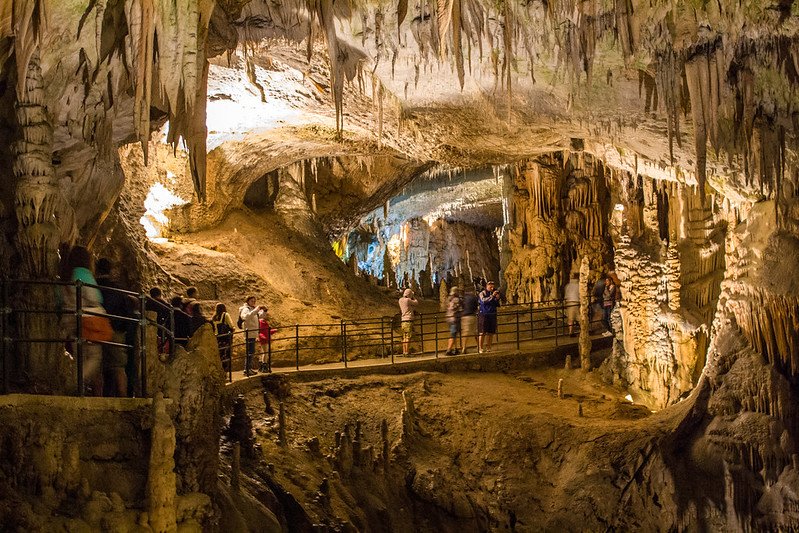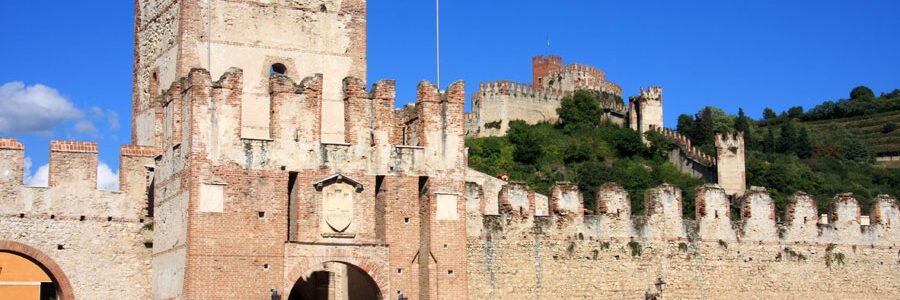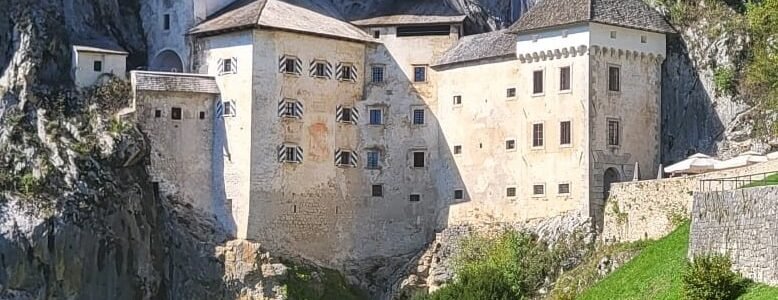Exploring Postojna and Skocjan Caves
Exploring Postojna and Skocjan Caves
Exploring Postojna and Škocjan Caves: Slovenia’s Underground Worlds of Wonder
Above ground, Slovenia is green, calm, and sunlit. But beneath its gentle surface lies an ancient, hidden world carved over millions of years — vast cave systems where water, time, and geology have conspired to create one of Europe’s most fascinating landscapes. Two of the most spectacular gateways into this underworld are the Postojna and Škocjan Caves. Each one offers something different: Postojna is immersive and theatrical, while Škocjan is raw and almost mythic. Visiting both in a single day is possible — and unforgettable.
Postojna Cave: The Subterranean Stage
Postojna Cave isn’t just a cave — it’s an underground experience designed with awe in mind. Stretching over 24 kilometers, it’s the most visited cave in Europe and one of the few with an electric train that takes visitors into its belly. The ride itself is surreal: tunnels open into glittering chambers, and karst formations flicker past like passing clouds.
Once inside, a guided walking tour covers about 1.5 kilometers, leading through halls with names like the Brilliant Passage, the Spaghetti Room, and the Concert Hall — where the acoustics are so perfect, live performances have been held.
The real magic of Postojna lies in the detail. Delicate stalactites hang like glass threads, while massive columns rise from the floor as if frozen mid-formation. Here, the infamous olm (Proteus anguinus) — a blind, pale amphibian nicknamed the “baby dragon” — lives in underground pools. It’s not just a scientific curiosity; it’s a symbol of the cave’s unique life system, found nowhere else in the world.
Predjama Castle: The Fortress in the Cliff
Just 10 minutes from Postojna Cave sits Predjama Castle, an essential stop for anyone already exploring the region. Built directly into a vertical cliff, it looks more like a film set than real architecture. But it’s very real — and very old. The current structure dates back to the 16th century, but the original fortress was built centuries earlier as a stronghold for rebels and knights.
Inside, visitors can explore living quarters, dungeons, and hidden passages. The legend of Erazem Lueger — a Slovenian Robin Hood figure — adds another layer of mystery. He is said to have used a secret tunnel to survive months-long sieges, sneaking food and supplies into the castle while under attack.
Visiting Predjama Castle between cave tours adds a dramatic, historical counterpoint to the geological focus of the day.
Škocjan Caves: Nature’s Cathedral
Where Postojna amazes with variety and accessibility, Škocjan humbles with scale. Recognized as a UNESCO World Heritage site, Škocjan Caves are less adorned but more primal. Here, the underground Reka River has carved a deep canyon — nearly 150 meters high — into the limestone, creating one of the largest known underground chambers in the world.
The trail through Škocjan takes visitors across narrow walkways suspended above roaring waters and under ceilings lost in shadow. It feels more like a natural cathedral than a cave. Flash photography is forbidden — and you won’t miss it. The atmosphere doesn’t need enhancement. You’ll feel small here, in the best possible way.
This cave is more rugged, less polished. It offers a raw, emotional contrast to Postojna’s theatrical elegance. Many visitors compare it to something out of Tolkien or Jules Verne — the type of place you expect to find ancient secrets or lost civilizations.
Comparing the Two: Why Visit Both
It’s tempting to choose between the two, but that would be like choosing between a symphony and a thunderstorm. Postojna is a masterpiece of accessibility and spectacle — an almost curated underground world with lighting, infrastructure, and interactive displays. Škocjan, on the other hand, retains the overwhelming presence of untamed nature.
Visiting both in one day offers a layered understanding of Slovenia’s karst landscape. From the biological intricacies of Postojna to the mythic scale of Škocjan, the experience speaks to both intellect and instinct.
A Daytrip with Depth: Logistics and Travel Flow
The two cave systems are located about 30 kilometers apart, connected by smooth roads and well-marked signage. Most travelers begin in Postojna (closer to the A1 highway), then continue to Škocjan in the afternoon. Total drive time between them is under 40 minutes.
If you’re coming from Croatia, particularly from Plitvice Lakes or Zagreb, Slovenia’s network of scenic cross-border routes makes it easy to combine natural wonders. Many travelers find the Plitvice to Ljubljana transfer to be a smooth and scenic way to connect iconic nature experiences in two neighboring countries — lakes above ground, caves below.
Guided cave tours operate on fixed schedules, so planning ahead is crucial. Both locations offer ticket prebooking online. Walking shoes with good grip are a must, as paths can be damp. Bring a light jacket — even in summer, the caves stay around 10°C.
Beyond the Caves: Local Touches Worth the Stop
If you have time between visits, stop at a local gostilna (Slovenian inn) or vineyard. The Karst region is known for its teran red wine, prosciutto aged in wind-swept cellars, and strong dairy culture. Villages like Divača and Lokev offer authentic meals in family-run establishments where everything feels handmade — because it is.
You can also find craft shops selling stone carvings and ceramics inspired by the very geology you’ve been walking through. These aren’t mass-produced souvenirs — they’re expressions of place.
Why Slovenia’s Underground Matters
It’s easy to overlook what’s below when everything above is so scenic. But in Slovenia, the underground is just as important to national identity as its forests, lakes, and castles. Caves here aren’t just tourist attractions — they’re cultural heritage, ecological preserves, and sources of scientific knowledge.
They remind us how much of the world remains unseen — and how silence, darkness, and stone can still move us deeply.
Official Travel Information for Slovenia’s Caves
For updated cave tour schedules, safety recommendations, and booking info, visit the official Slovenia tourism site — the most reliable and comprehensive resource for planning your underground adventure.
Exploring Postojna and Škocjan Caves
Not all wonders are above ground. In Slovenia, some of the most unforgettable landscapes lie beneath the surface — carved by water, shaped by time, and revealed only to those who descend. Postojna and Škocjan aren’t just caves. They’re living systems of shadow, echo, and geological memory.
Those beginning their exploration from Ljubljana can experience both without compromise. A private transfer to Postojna Cave or onward to the depths of Škocjan lets the transition from city to silence feel intentional — not logistical.
- Reach Postojna from Ljubljana without detours
- Return from the underground directly to the capital
- Learn more about the Postojna cave system
- Explore the UNESCO-listed Škocjan marvel
- Create a personalized cave and countryside itinerary
- Discover more journeys off the surface
Two worlds underground — no rush, no rails, just readiness
Between Postojna’s guided rail passages and Škocjan’s cathedral-like chambers, the journey is not only visual. It’s spatial, tactile — a lesson in listening to stone. With a dedicated transfer, the only thing you carry is anticipation, not timetables.
- Ideal route for travelers who want both comfort and raw nature
- No parking, timing, or group logistics to manage — just presence
- Route pairs well with wine stops or coastal detours
- Family-friendly, accessible, and deeply moving
- For those who prefer their awe uninterrupted
Where silence becomes architecture
Exploring Postojna and Škocjan feels less like tourism, more like trespassing into time
This journey beneath Slovenia connects ancient spaces with present clarity. Official Slovenia cave tourism site.
RECENT POSTS
- TripCom Slovenia Online Presence July 9, 2025
- Zurich City Guide July 1, 2025
- Liechtenstein City Guide July 1, 2025





























































Leave a Comment